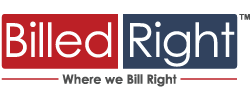Top Strategies to Boost Efficiency in In-House RCM

Evaluating In-House Revenue Cycle Management
Understanding the landscape of in-house Revenue Cycle Management (RCM) is vital for healthcare professionals looking to enhance efficiency. This section will cover the benefits and challenges associated with managing RCM in-house.
Benefits of In-House RCM
Managing RCM in-house can present numerous advantages that directly impact your practice’s financial performance and overall efficiency. Some key benefits include:
- Increased Control: In-house RCM allows you to have full control over your billing processes and financial data. You can implement changes swiftly to adapt to regulatory requirements and internal policies.
- Enhanced Team Collaboration: Having your RCM team under one roof fosters better communication and collaboration. This can lead to quicker resolutions of issues and improved patient interactions.
- Customizable Processes: In-house RCM enables you to tailor processes specifically to your practice’s needs, enhancing efficiency in operations and potentially improving cash flow.
| Benefit | Description |
|---|---|
| Increased Control | Direct oversight of billing and processes |
| Enhanced Team Collaboration | Improved communication and problem-solving |
| Customizable Processes | tailored processes for specific practice needs |
Challenges of In-House RCM
While there are clear advantages to in-house RCM, there are also challenges that must be navigated. These obstacles can impact your efficiency and overall revenue cycle management.
- Resource Intensive: Managing RCM in-house can be resource-heavy, often requiring dedicated staff and technology investments to maintain efficiency and compliance.
- Potential for Errors: Without adequate training and experience, in-house staff may make errors in coding and billing, leading to claim denials and delayed payments.
- Staff Training Needs: Continuous training is necessary to keep staff informed about industry changes and compliance requirements, which can be a time-consuming process.
| Challenge | Description |
|---|---|
| Resource Intensive | Increased staffing and technology investment |
| Potential for Errors | Risk of coding and billing mistakes |
| Staff Training Needs | Ongoing training can be time-consuming |
Strategies for Maximizing In-House RCM Efficiency
To enhance the effectiveness of your in-house revenue cycle management (RCM), consider implementing these targeted strategies. Each approach is designed to streamline processes, improve financial performance, and ultimately boost your practice’s revenue.
Optimizing Coding and Documentation
Accurate coding and thorough documentation are foundational to a successful RCM process. By ensuring that your coding practices are routine and precise, you can minimize denials and delays in payments. Here are some strategies to optimize coding and documentation:
- Regular Coding Audits: Conduct coding audits periodically to identify errors and trends. This allows for ongoing training and adjustments as necessary.
- Utilizing Coding Tools: Incorporate software tools that can assist with coding accuracy and automate some tasks.
- Standardized Documentation Templates: Develop standardized templates that ensure all necessary information is captured for every patient encounter.
Streamlining Billing Processes
An efficient billing process is essential for reducing the time it takes for claims to be processed and payments to be collected. Here are some key steps you can take:
- Automating Billing Systems: Use billing software to automate the creation and submission of claims. Automation can reduce human error and expedite processes.
- Implementing Clear Policies: Establish clear billing policies and communicate these to your staff. This will help ensure consistency and understanding in the billing department.
- Monitoring Key Performance Indicators (KPIs): Regularly review KPIs, such as days in accounts receivable and claim denial rates, to identify areas for improvement.
| KPI | Current Value | Target Value |
|---|---|---|
| Days in Accounts Receivable | 45 days | 30 days |
| Claim Denial Rate | 10% | 5% |
Improving Staff Training and Communication
Your team plays a critical role in the success of your in-house RCM. Ongoing training and effective communication are vital for maximizing efficiency. Consider the following:
- Regular Training Sessions: Schedule regular training sessions focused on coding updates, billing procedures, and compliance to ensure all staff members are up-to-date.
- Cross-Department Collaboration: Foster collaboration between coding, billing, and clinical staff to enhance communication. This can help address issues quickly when they arise.
- Feedback Mechanisms: Establish feedback channels that allow team members to share insights and suggestions for process improvements.
By following these strategies on how to maximize in-house RCM efficiency, you can enhance the financial performance of your practice while ensuring compliance and care quality.







